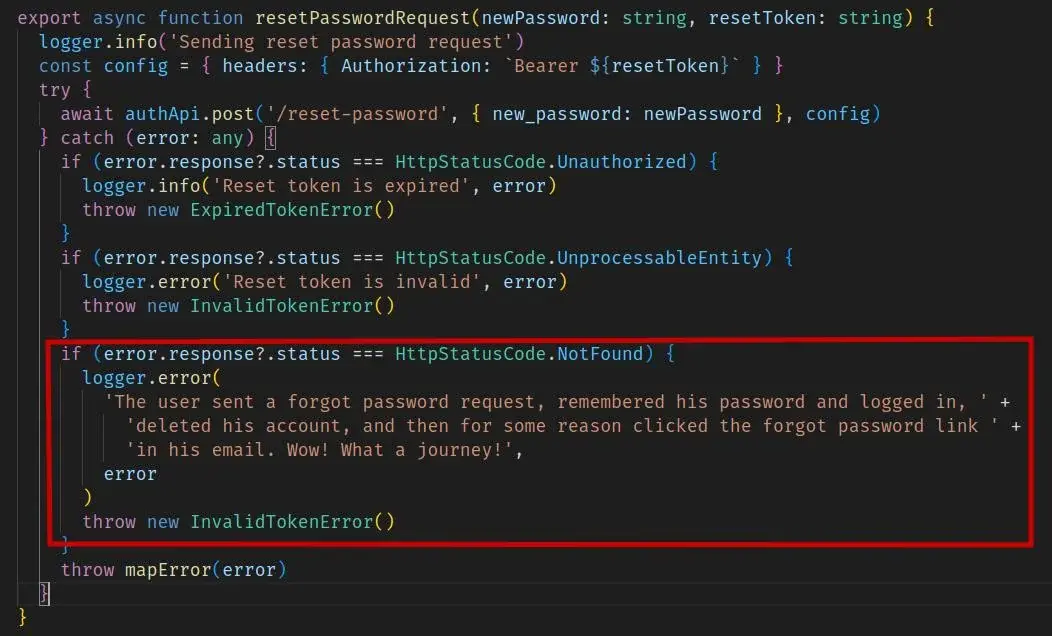this post was submitted on 12 Aug 2024
1019 points (99.5% liked)
Programmer Humor
19512 readers
339 users here now
Welcome to Programmer Humor!
This is a place where you can post jokes, memes, humor, etc. related to programming!
For sharing awful code theres also Programming Horror.
Rules
- Keep content in english
- No advertisements
- Posts must be related to programming or programmer topics
founded 1 year ago
MODERATORS
you are viewing a single comment's thread
view the rest of the comments
view the rest of the comments

The type of error where you have to give up trying to understand the user.
It's quite simple actually: The user wanted to delete their account, but forgot their password so they requested a password reset. Before the password reset email was delivered, the user remembered their password and deleted their account. The password reset email is finally delivered and apparently some email clients open all the links in the background for whatever reason, so it wasn't actually the user who clicked the password reset link.
What? Really??
Yes, e.g. outlook replaces links in mails so they can scan the site first. Also some virusscanners offer nail protection, checking the site that's linked to first, before allowing the mail to end up in the user's mail client.
Thats why you never take actions on a GET request, but require a form with button for the user to do a POST.
It can be worse, we had to add a captcha for those link scanners cause they'd submit the forms and invalidate tokens too:(
Wow. That sounds terrible. Good to know.
Proofpoint does this too, but AFAIK they all just change the link rather than go to it. The link is checked when the user actually clicks on it. Makes sense to do it on-demand because the contents of the link can change between when the email is received and when the user actually clicks it.